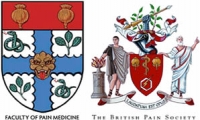The Assessment and Management of Vertebral Fractures in Osteoporosis course for Nurses



This session explores the diagnosis and management of vertebral fractures secondary to osteoporosis.
Objectives
By the end of this session, you will be able to:
- Explain the importance of diagnosing and treating vertebral fractures
- Identify patients with features suggestive of vertebral fracture in order to make a diagnosis
- State the reasons for delay in the diagnosis of vertebral fractures
- Describe the pharmacological and non-pharmacological management options for pain secondary to vertebral fractures
- Identify patients for whom referral for consideration of invasive interventions may be appropriate
Osteoporosis is a condition that is characterised by a loss of bone tissue and disruption in bone formation. This results in spongy (porous) bone which is weaker and thus at risk of breaking (fracture). Osteoporosis itself does not cause any symptoms and often the first time a patient learns they have the condition is following a fracture which can cause both acute and chronic pain.
Ashley is an Academic Clinical Fellow in Rheumatology currently training in the West Midlands region. His main research interests are in osteoporosis and osteoarthritis. He is particularly interested in patient education and information needs.


Zoe is an Honorary Consultant Rheumatologist at the Haywood Rheumatology Centre and Clinical Lead for the osteoporosis service for North Staffordshire. She chairs the Midlands Bone Interest Group and sits on various committees within the Royal Osteoporosis Society, including the research grants and conference committees.
Zoe is also a Senior Lecturer at the Primary Care Centre Versus Arthritis at Keele University, where she leads the osteoporosis research group and is currently involved in a range of research studies with qualitative and quantitative methods, with specific research interests in primary care management of osteoporosis and communication in the consultation.
- Anaesthesia | Paediatrics | Pharmacokinetic,Pharma...
- Posted By eIntegrity Healthcare e-Learning
- Posted Date: 2024-11-18
- Location:Online
- This session will provide an overview of pharmacokinetic (PK) maturation during infancy and the use of size models to describe PK differences between children and adults. It will go on to describe known pharmacodynamic (PD) differences and consider the im
- Anaesthesia | Paediatrics | Opioids In Paediatrics...
- Posted By eIntegrity Healthcare e-Learning
- Posted Date: 2024-11-18
- Location:Online
- This session looks at practical opioid pharmacology applied to the clinical use of different agents for neonates, infants and small children.
- Anaesthesia | Paediatrics | Advanced Paediatric Li...
- Posted By eIntegrity Healthcare e-Learning
- Posted Date: 2024-11-18
- Location:Online
- This session addresses the advanced management of the critically ill child and the child in cardiac arrest.
- Anaesthesia | Paediatrics | Head Injury
- Posted By eIntegrity Healthcare e-Learning
- Posted Date: 2024-11-18
- Location:Online
- This session describes the principles of stabilisation and management of a child with a head injury and how this differs from the management of an adult patient. This includes methods of assessment, effects and management of raised intracranial pressure,
- Anaesthesia | Paediatrics | Multiply Injured Child...
- Posted By eIntegrity Healthcare e-Learning
- Posted Date: 2024-11-18
- Location:Online
- This session looks at the initial management and stabilization of the multiply injured child with reference to published trauma guidelines.







